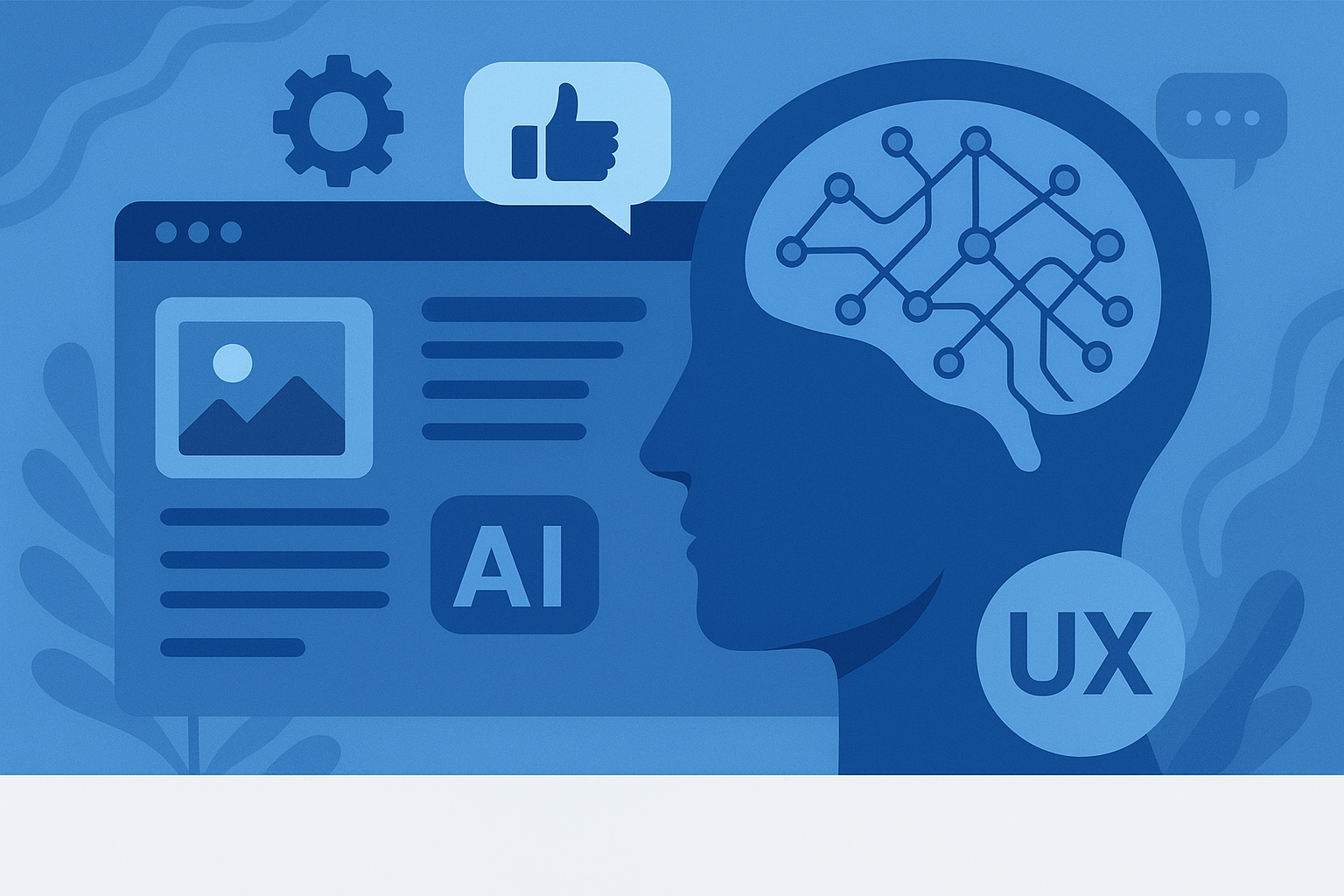Just as AI fundamentally reshaped enterprise operations and search engines, it’s now entering a new phase: the user experience revolution. With platforms like Adobe, Salesforce, and Microsoft layering AI deeper into the user interface, we’re witnessing a tectonic shift in how users interact with digital products—and how businesses monetize those interactions. This new frontier in UX design isn’t just about aesthetics or functionality—it’s about retention, conversion, and long-term customer value.
For investors, this isn’t a design trend—it’s a revenue growth story.
Why It Matters Now: AI Is Moving from the Engine Room to the Front Office
The surge in AI-enabled backend productivity over the last two years—from generative models to predictive analytics—has laid the foundation. Now, AI is stepping into the spotlight, shaping the user journey in real time.
According to Barron’s and Yahoo Finance, companies that integrate AI into the user interface are seeing measurable gains: higher click-through rates, faster onboarding, and reduced churn. Microsoft, for example, reported a 12% uptick in Office 365 engagement after rolling out Copilot-integrated UI enhancements. Similarly, Adobe’s Firefly AI has boosted average time-on-platform by over 18% since early 2025, according to internal reporting.
In the hyper-competitive software-as-a-service (SaaS) market, these metrics can be the difference between leading a category and falling behind.
UX 2.0: Where Human-Centered Design Meets Machine Intelligence
Traditionally, UX was a domain of human designers optimizing layouts and interfaces through user feedback. Today, AI is co-piloting this process—suggesting layout changes, adapting UI elements based on user behavior, and even running micro-tests in real time to optimize flow.
Companies like Figma, HubSpot, and Notion are pioneering this trend. Figma recently previewed AI features that anticipate user design intentions, speeding up workflows and improving usability. According to PitchBook, VCs are now funneling funds into AI‑UX startups, with $3.1B deployed globally in the first half of 2025 alone—a 47% YoY increase.
Even more striking is the rise of real-time adaptive UX. Using AI models to personalize interfaces based on user segment, device, or even mood, platforms can now deliver Amazon-level personalization outside of e-commerce. This trend is catching fire in fintech, edtech, and B2B productivity software.
Future Trends to Watch
1. AI Design Assistants Go Mainstream
Expect embedded AI design tools (like Canva’s Magic Design or Figma’s AI Assistant) to become table stakes. Startups providing white-labeled AI UX solutions will likely see major acquisitions.
2. Emotion-Aware UX
Facial expression analysis, tone detection, and eye-tracking may be integrated into interfaces to adapt in real time—particularly in mental health, gaming, and remote education apps.
3. Multimodal UX Interfaces
Interfaces won’t be limited to visual interactions. Voice, gesture, and even augmented reality are being fused with AI for more immersive UX—think Meta’s next-gen AI AR glasses or OpenAI’s Whisper-integrated design prototypes.
Key Investment Insight
Investors should look beyond the headline AI stocks and toward UX-centric software companies and infrastructure enablers. Key areas to monitor:
- Mid-cap software platforms implementing AI-driven personalization (e.g., Smartsheet, Monday.com).
- Design infrastructure firms like Unity, Figma (if IPO’d), and Miro, which could be buyout targets.
- White-label AI design API startups with enterprise penetration (check recent VC deals via PitchBook or CB Insights).
- ETFs with heavy exposure to human-computer interaction (HCI) or design-focused AI.
While valuations in AI remain elevated, companies that can translate AI adoption into measurable UX improvements will command premium multiples and durable margins.
Stay Ahead of the Curve
As AI continues its rapid expansion into human-facing roles, the next wave of digital platform growth will be written in the language of user experience—one shaped, optimized, and driven by machine intelligence.
For forward-looking investors, the time to evaluate your exposure to UX‑AI convergence is now. Watch for quarterly earnings that cite UX enhancements, follow M&A deals in the design space, and track sector shifts in VC funding.
Stay updated with MoneyNews.Today for more investor-focused insights into how innovation, data, and strategy are reshaping the markets—daily.





